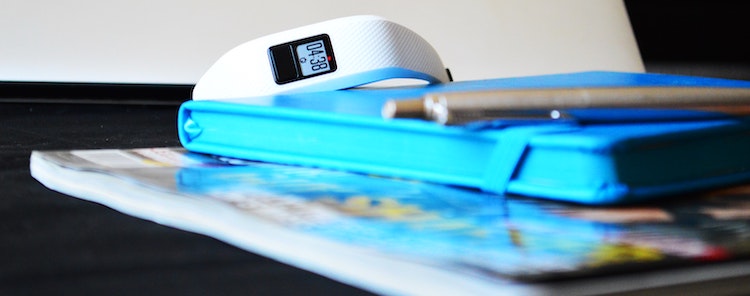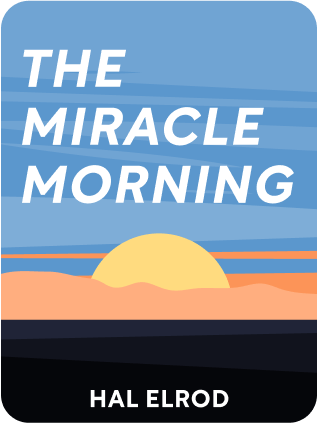

This article is an excerpt from the Shortform book guide to "The Miracle Morning" by Hal Elrod. Shortform has the world's best summaries and analyses of books you should be reading.
Like this article? Sign up for a free trial here .
Is it a struggle for you to make a habit? Are you sure that you know how to form a habit?
In The Miracle Morning, Hal Elrod outlines his life-changing morning routine—a set of six daily habits. He discusses why habits are important and why so many people fail to control them. Then he shares his formula to make a habit in three 10-day phases.
Read more to discover how to form a habit in 30 days.
How to Form a Habit and Why You Should
The quality of your habits (the behaviors you repeat regularly and often subconsciously) determines the quality of your life. A person who’s successful knows how to make a habit and has established the habits necessary for achieving and sustaining success. In contrast, someone who’s struggling in any area of life hasn’t committed themselves to the habits that generate success.
Because your habits dictate your life, it’s critical that you learn to control them. You need to identify, practice, and sustain the habits that will create the success you want while eliminating detrimental habits.
Most people fail at controlling or changing their habits. New Year’s resolutions are a prime example. A New Year’s resolution is typically a positive habit you want to establish (exercising) or a negative one you want to stop (smoking). But less than 5% of those who make resolutions stick with them.
Most people fail to change habits because they aren’t prepared to overcome the mental challenges that are part of the process. However, with the right strategy, you can change any habit in thirty days. The Miracle Morning 30-Day Habit Mastery Strategy will enable you to stick to the Life S.A.V.E.R.S. routine or to establish any other habit you want to.
To make a habit and master it, you will go through three 10-day phases:
The Unbearable Phase (Days 1-10)
Whether you’re implementing a new habit or dumping an unproductive one, the first ten days are the most difficult—in fact, during this phase, change seems unbearable or impossible.
The key to getting through it is realizing this only temporary, rather than the way the new habit will always feel. Knowing that the worst is temporary—you only have to endure it for ten days—and the benefit is long-term gives you the willpower to get through this phase.
Example: When Elrod first started running, the first 10 days were physically painful and all he wanted to do was quit. He hated it. Mentally, he had to force himself to keep going.
The Uncomfortable Phase (Days 11-20)
Having survived the first phase will generate confidence, but you still need commitment and discipline to get through Phase 2. You’ll be tempted to backslide into your old behaviors—for instance, sleeping in instead of getting up early to exercise. However, you can overcome the temptation by focusing on and looking forward to the next phase, in which change will prevail.
Example: Elrod’s second phase of running was a bit less painful, he hated it less, and getting up and running every morning started to feel normal.
The Unstoppable Phase (Days 21-30)
In the first two phases, you’ve formed and established a new habit, but you’re not done yet. (Many people think they’re done after twenty days.) Phase 3 is important because it sets you up to sustain the new habit. Completely replace the pain of first twenty days with positive reinforcement and enjoyment of the new habit, and it will become part of your identity. You’ll move from trying to living the habit.
Example: In this phase, Elrod forgot that he had hated running and began to enjoy it. Instead of battling mentally to keep going, he occupied his mind with affirmations and listening to self-help books and lectures. He went from believing he couldn’t run (a self-imposed limitation) to becoming a runner in thirty days. Soon, he even joined friends and ran a 52-mile ultra-marathon, which previously would have been unthinkable.
Similarly, you can make the Miracle Morning routine a habit. For encouragement, read some of the success stories at the front of the book, on the website, or in the Facebook community. For instance, one practitioner wrote: “I am on day 79 … and have not missed a single day. Honestly, this is the first time in my life that I’ve ever set out to do something and have actually stuck with it … I now look forward to waking up every day. The Miracle Morning has completely changed my life.”
Ready to make a habit? Now you have a plan.

———End of Preview———
Like what you just read? Read the rest of the world's best book summary and analysis of Hal Elrod's "The Miracle Morning" at Shortform .
Here's what you'll find in our full The Miracle Morning summary :
- How getting up early and following a simple, daily routine can empower anyone to transform any area of their life
- How Elrod's "Life S.A.V.E.R.S." routine can help you feel energized and motivated
- Why hitting the snooze button is comparable to resisting your life






